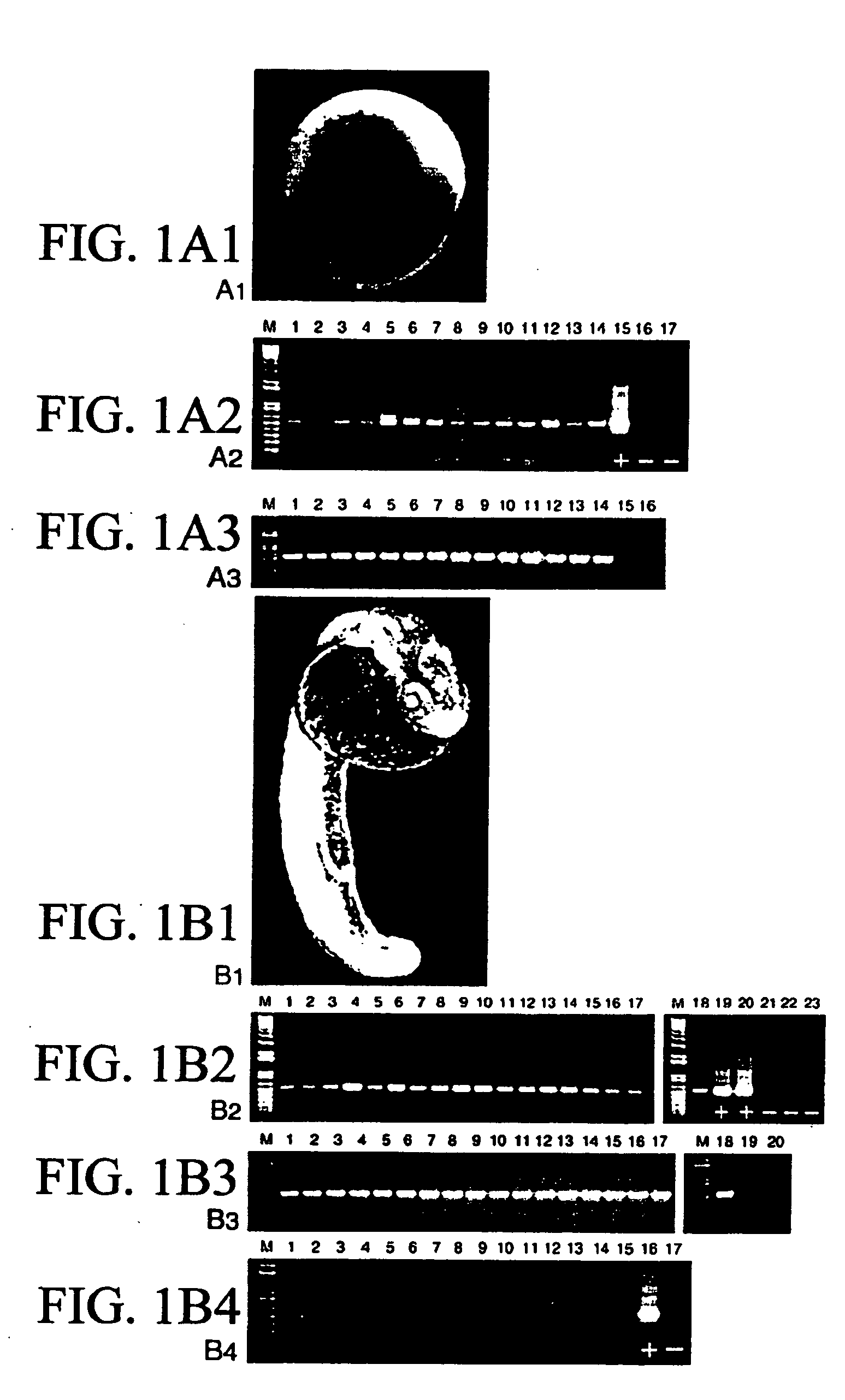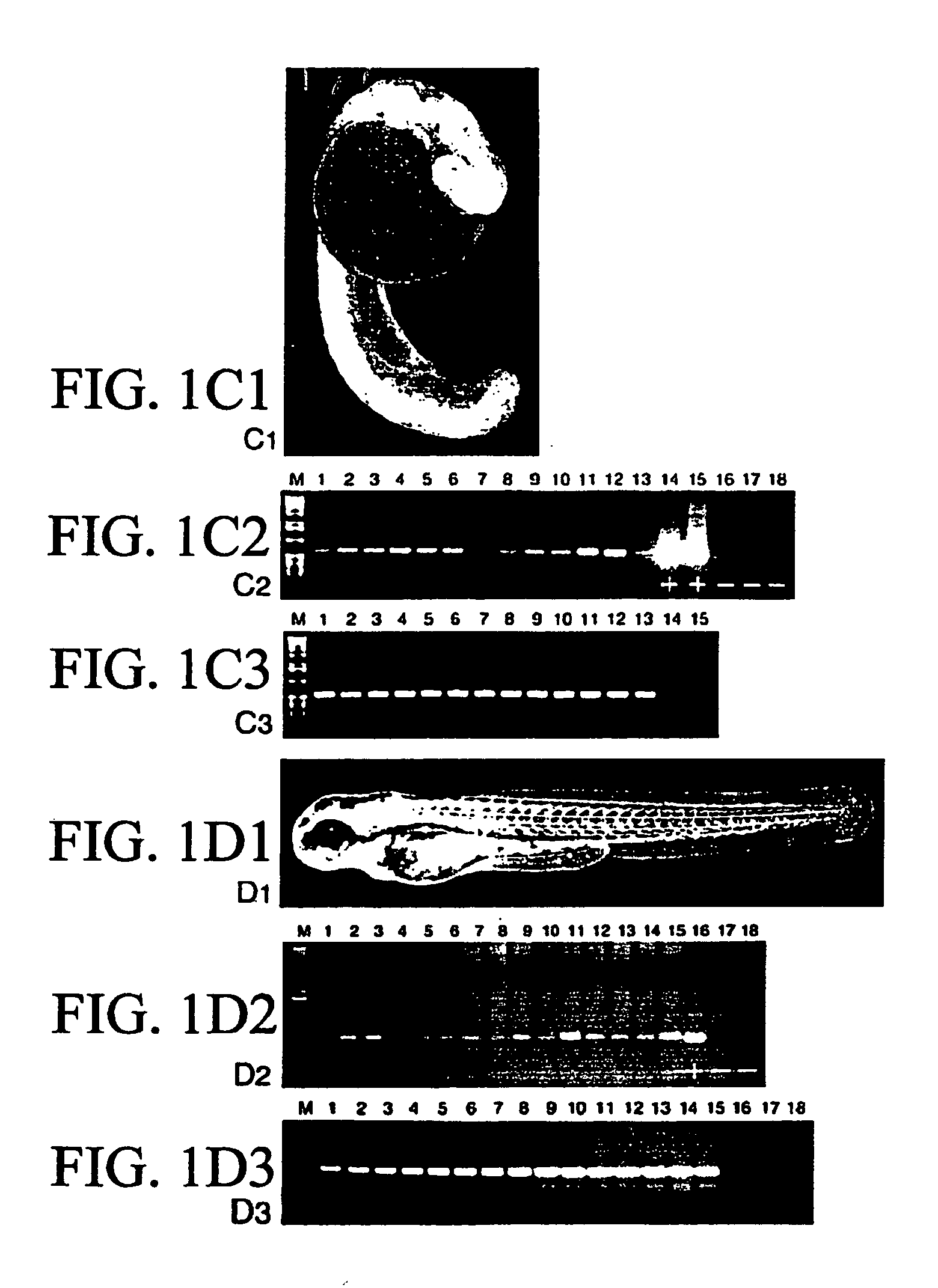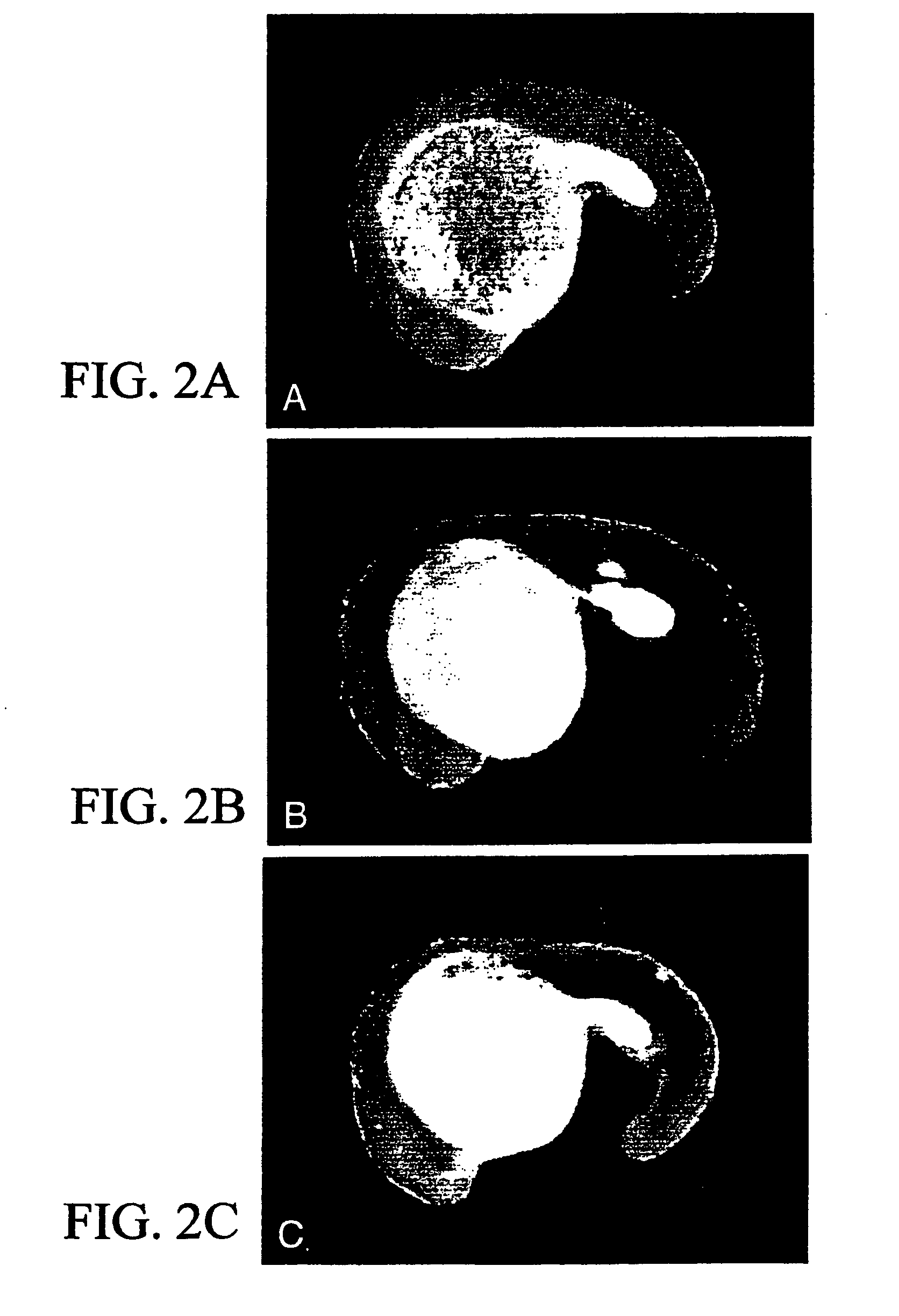Transgenic zebra fish embryo model for hematopoiesis and lymphoproliferative disorders
- Summary
- Abstract
- Description
- Claims
- Application Information
AI Technical Summary
Benefits of technology
Problems solved by technology
Method used
Image
Examples
example 1
Expression Constructs and Microinjection of Zebrafish Embryos
[0052] Fish and embryos. The adult wild type ZF were maintained generally according to the Zebrafish book recommendations (Westerfield, 1995). Males and females were kept in 10 G tanks, 70 fish per tank, with a constant slow flow of conditioned water at 26° C. and a controlled 14 hours day / 10 hours night cycle. Embryos were obtained through natural spawning in breeding cages with a netted false bottom or by in vitro fertilization using eggs and milt collected from the mature females and males anesthetized with tricaine (Sigma). Embryos were kept at 28.5° C. in Petry dishes, 30-50 per dish.
[0053] Five days after hatching, frys were transferred to a nursery for 2 weeks and raised in 1 G mouse cages at 28.5° C. Larvae were fed with live food, paramecia and brine shrimps, according to recommendations of Dr. Stephen Ekker (personal communication). The survival rate was over 95%. Juvenile ZF were transferred to 10 G tanks, tre...
example 2
Transgenic Expression of Human Ikaros Isoforms Ik-4 and Ik-2 in ZF Embryos
[0068] Linearized expression vectors hIK4 wt pFV4aCAT and hIK2wt pFV4aCAT were mixed with GFP mRNA and microinjected into one-cell stage ZF embryos to force expression of the dominant-negative human Ikaros isoform Ik-4 and the DNA binding human Ikaros isoform Ik-2 (control) during primitive hematopoiesis. The microinjections were successful in >95% of all embryos, as evidenced by a strong green fluorescence documenting the expression of the coinjected GFP mRNA from mid-gastrula until prim-5 stage (FIGS. 1A1, 2A1, 3A1).
[0069] Total mRNA was extracted from GFP-positive individual ZF embryos at 6 hpf, mid-gastrula stage (FIG. 1A1), at 24 hpf, prim-5 stage (FIGS. 1B1, 1C1) and at 48 hpf, Long-pec stage (FIG. 1D1). The extracted mRNA was reverse-transcribed using oligo-dT and random hexamers. The resulting cDNAs were amplified with ZF β-actin primers (FIGS. 1A3, 1B3, 1C3, and 1D3) to test the integrity of the ext...
example 3
In Situ Localization of nIkaros Transgenes
[0073] The topographical profile of the human Ikaros transgenes Ik-4 and Ik-2 expressed in the ZF embryos at 17-19 hpf was confirmed by whole-mount in situ hybridization using digoxigenin-labeled Ikaros riboprobes. Probes hybridized to the human Ikaros mRNA were immunolocalized with anti-DIG Fab fragments and detected by chromogenic reaction with NBT / BCIP. No false positive signals were detected in non-transgenic control ZF embryos (FIG. 2A). In transgenic ZF embryos, the chromogenic (blue-purple) signal of human Ik-4 or Ik-2 transgene expression was largely localized to the trunk region containing the intermediate cell mass (ICM) where primitive hematopoiesis takes place (FIGS. 2B-2F), reminiscent of the expression profile of other regulators of hematopoiesis such as GATA-1 and c-MYB (Detrich et al., 1995, Amatruda and Zon, 1999).
[0074] At 48 hpf, embryonic hematopoiesis in the ZF shifts from the ICM to the dorsal mesentery and forms the ...
PUM
 Login to View More
Login to View More Abstract
Description
Claims
Application Information
 Login to View More
Login to View More - R&D
- Intellectual Property
- Life Sciences
- Materials
- Tech Scout
- Unparalleled Data Quality
- Higher Quality Content
- 60% Fewer Hallucinations
Browse by: Latest US Patents, China's latest patents, Technical Efficacy Thesaurus, Application Domain, Technology Topic, Popular Technical Reports.
© 2025 PatSnap. All rights reserved.Legal|Privacy policy|Modern Slavery Act Transparency Statement|Sitemap|About US| Contact US: help@patsnap.com



